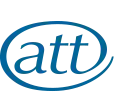Association of Taxation Technicians
The Association of Taxation Technicians or ATT, is a leading professional body in the UK for those providing tax compliance services and related activities. It is registered with The Charity Commission in the UK (803480).
 | |
| Abbreviation | ATT |
|---|---|
Membership | 9,000[1] |
President | Jeremy Coker |
Deputy President | Richard Todd |
Vice President | Richard Todd [2] |
Executive Director | Jane Ashton[3] |
| Website | att |
The association has over 9,000 members and fellows together with over 5,000 students. Members and fellows use the practising title of 'Taxation Technician' or ‘Taxation Technician (Fellow)’ and the designatory letters 'ATT' and 'ATT (Fellow)' respectively.
The ATT is based in London, UK.[1] Although an independent organization, the ATT shares back-office services with the Chartered Institute of Taxation (CIOT).[4]
The association is a charity and a leading professional body for those providing UK tax compliance services. Its primary charitable objective is to promote education and the study of tax administration and practice. One of its key aims is to provide an appropriate qualification for individuals who undertake tax compliance work. It contributes to consultations on the development of the UK tax system and seek to ensure that, for the general public, it is workable and as fair as possible.
The ATT is a technician level qualification which entitles those who have completed the exams and obtained relevant supervised work experience to call themselves taxation technicians.[1] Training may be provided by other organizations. For example, BPP University provides courses for students who plan to sit the ATT examinations to qualify as a taxation technician.[5] As well as passing the exams, students seeking certification as a registered Taxation Technician must be able to show that they have two years' of acceptable practical experience.[6]
Higher Apprenticeship framework
In 2011, the UK government launched the Higher Apprenticeship Fund[7] to support a new wave of Apprenticeship frameworks. With the support from that Fund, PwC led the development of the Higher Apprenticeship in Professional Services framework.[8]
The new framework includes distinct pathways for Audit, Tax and Management consulting. The tax pathway within this framework is aligned with the requirements of the ATT exams.
The framework has the blend of technical knowledge, wider competence and business skills that employers have told us they are looking for to enable Apprentices to operate effectively and productively in a tax environment.
Branches
There are 40 branches run in conjunction with the Chartered Institute of Taxation catering for the requirements of the members and students within their areas.
Technical submissions to HMRC
The technical officers of the ATTmeet with officials from HM Treasury and HM Revenue & Customs, to help ensure that the viewpoint of the taxpayer and tax practitioners is taken into account in the development of HMRC's policy and practice. Some of the submissions made by ATT are:
- Withdrawal of extra statutory concessions - The ATT comments sent to HMRC 8 January 2015 on Withdrawal of extra statutory concessions. 12 January 2015
- Collection and management of devolved taxes in Wales - The ATT response to the Welsh White Paper sent on 15 December 2014 on Collection and management of devolved taxes in Wales. 15 December 2014
- Tackling offshore tax evasion - The ATT responses sent to HMRC 31 October on Tackling offshore tax evasion: a new criminal offence and Tackling offshore tax evasion: strengthening civil deterrents. 31 October2014
References
- "About Us". The Association of Taxation Technicians. Archived from the original on 7 September 2015. Retrieved 11 September 2015.
- "Who's Who at the Association - Council". The Association of Taxation Technicians. Retrieved 11 September 2015.
- "Who's Who at the Association - Senior Staff". The Association of Taxation Technicians. Archived from the original on 9 February 2015. Retrieved 11 September 2015.
- "The Chartered Institute of Taxation and the Association of Taxation Technicians Enhance Membership System With End-to-End Systems Integration". Netcall. 20 July 2010. Retrieved 2011-06-30.
- "ATT". BPP University College. Archived from the original on 2011-05-30. Retrieved 2011-06-30.
- "The Association of Taxation Technicians (ATT)". LexisNexis. Archived from the original on 2012-03-07. Retrieved 2011-06-30.
- Higher Apprenticeship Fund, https://www.gov.uk/government/news/10-000-higher-apprenticeships-to-help-business
- Professional Services Higher Apprenticeship (England), http://www.afo.sscalliance.org/frameworkslibrary/index.cfm?id=FR01200